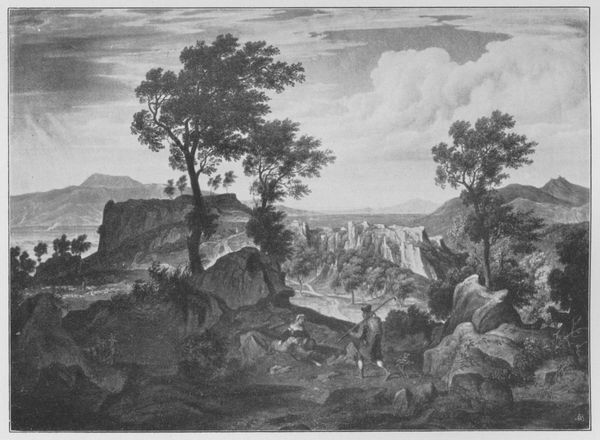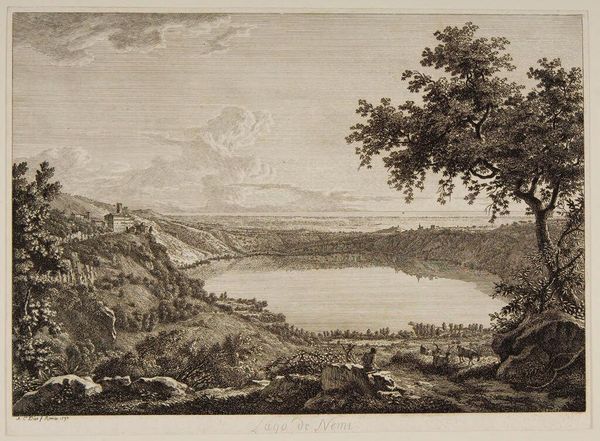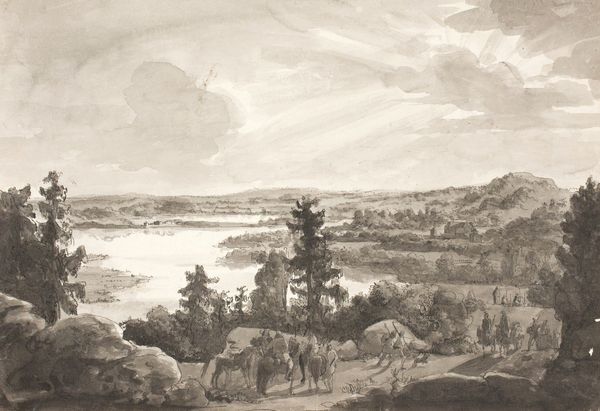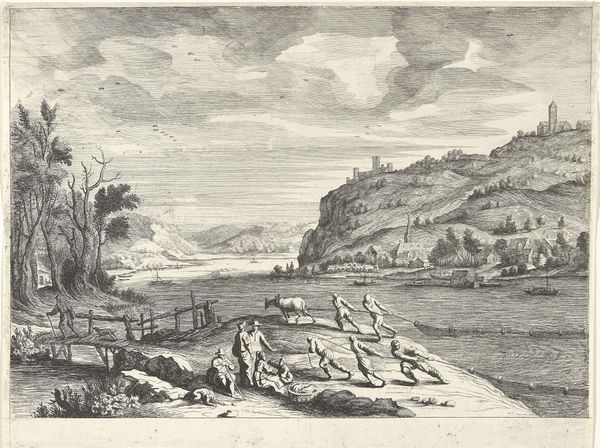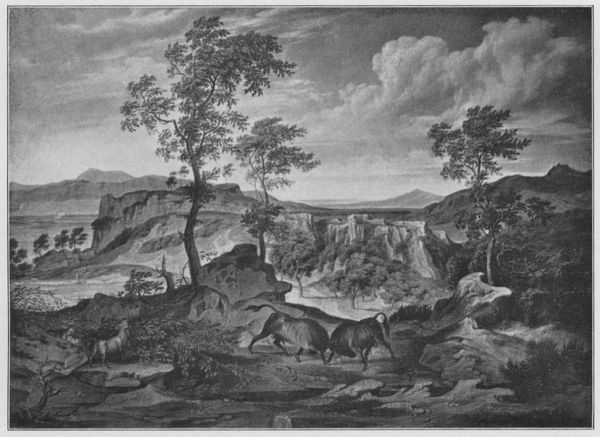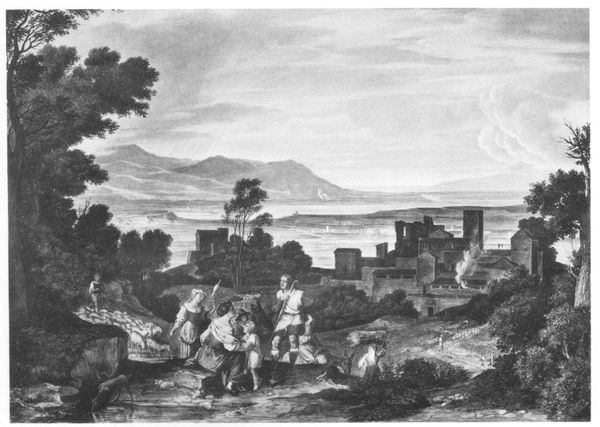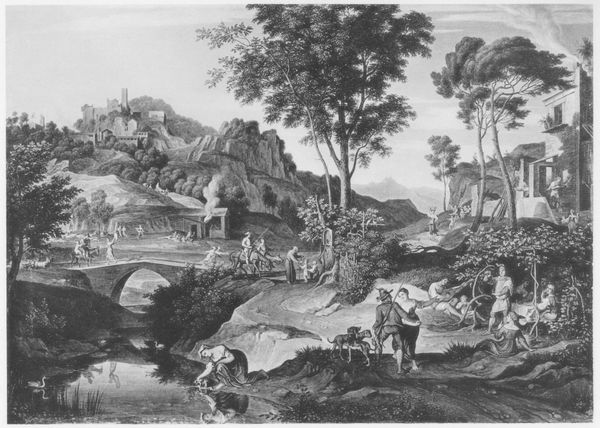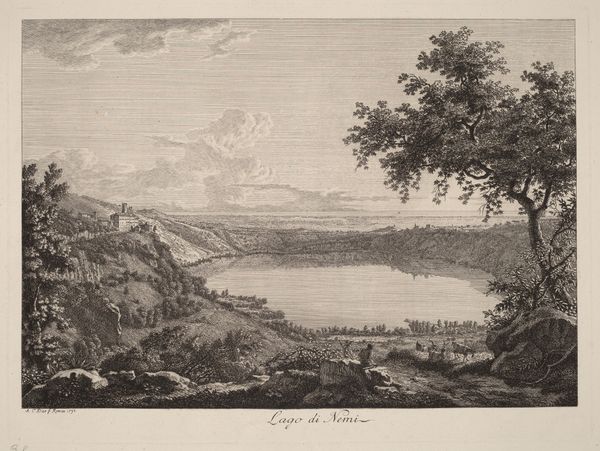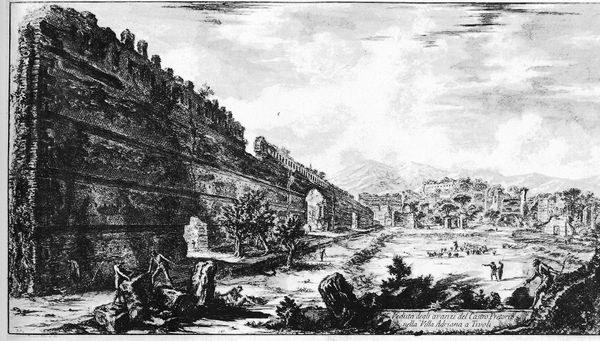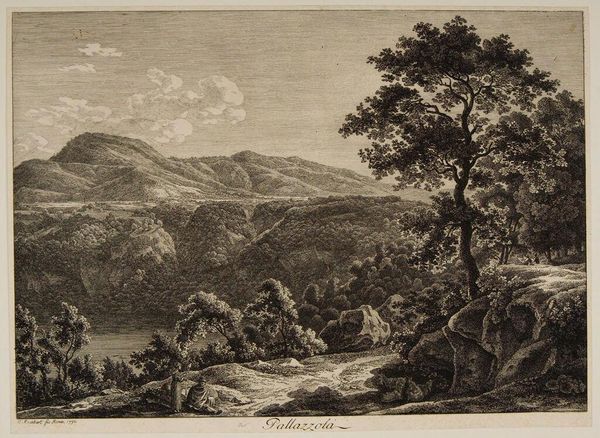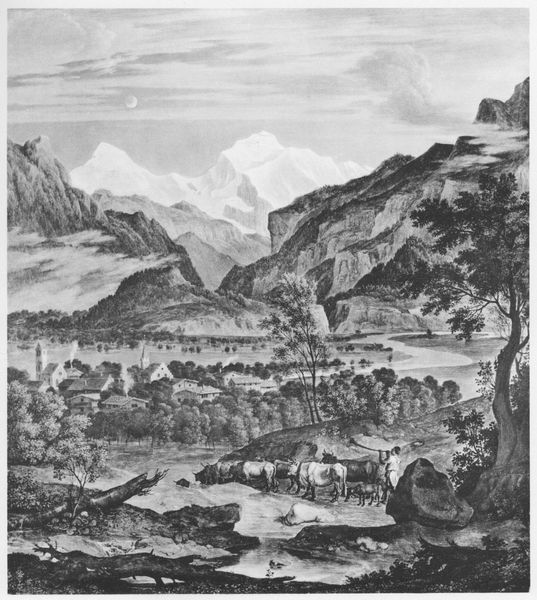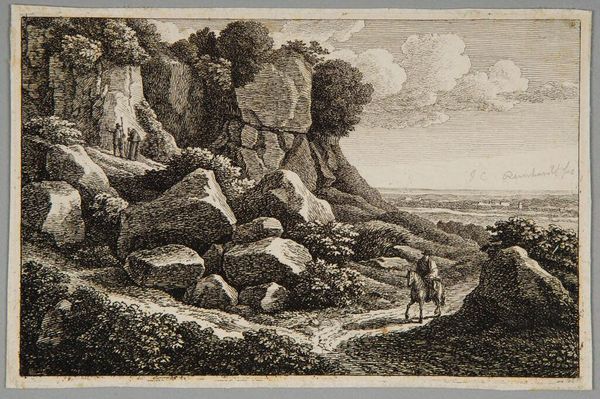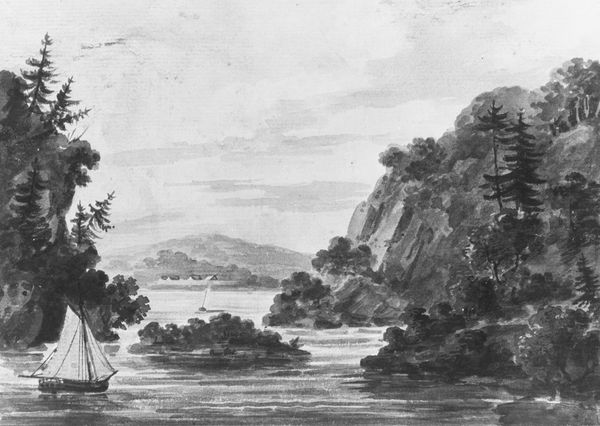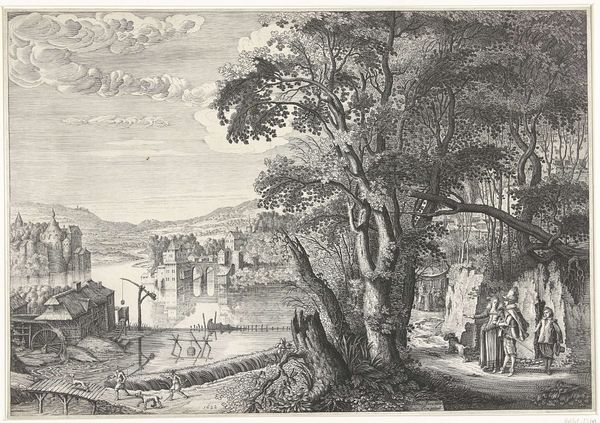
engraving
#
landscape
#
romanticism
#
engraving
#
realism
Copyright: Public domain
Editor: Here we have "Tiber Landscape," an engraving, presumably made of etched copper, by Joseph Anton Koch. The rolling hills and the river winding through the scene create such a calm, idyllic vista, even a bit picturesque. What strikes you when you look at this work? Curator: As a materialist, my eye immediately goes to the means of its creation. Think about the copper, the engraver’s tools, the labour involved. This isn’t some spontaneous gesture; it’s a deliberate process of reproduction meant for wider consumption. The engraving allowed this vista to reach a larger audience beyond the traditional patron class, influencing their ideas of the Roman landscape and its people. Editor: That’s a great point. The printmaking process democratizes access, at least visually. Curator: Exactly! And that democratisation allows for the distribution of ideas. Landscape wasn't just "out there," existing independent of humans. It became packaged, reproduced, and commodified, influencing what the middle classes might consider picturesque and worthy of travel. Koch and his workshop, in a way, manufactured desire. Consider also the working class farmers, shepherds, travellers, all rendered at very similar size as if cogs in some kind of machine to illustrate this specific experience of Roman perfection. What are the conditions in which this view exists, who gets access to it? Editor: I never considered how the medium itself could influence perceptions of the scene portrayed. Thanks for broadening my view. Curator: Remember, art isn't created in a vacuum. Its materials, its mode of production, and its intended audience all play a crucial role in its meaning. Keep questioning the ‘how’ and the ‘why’ behind art objects.
Comments
No comments
Be the first to comment and join the conversation on the ultimate creative platform.
